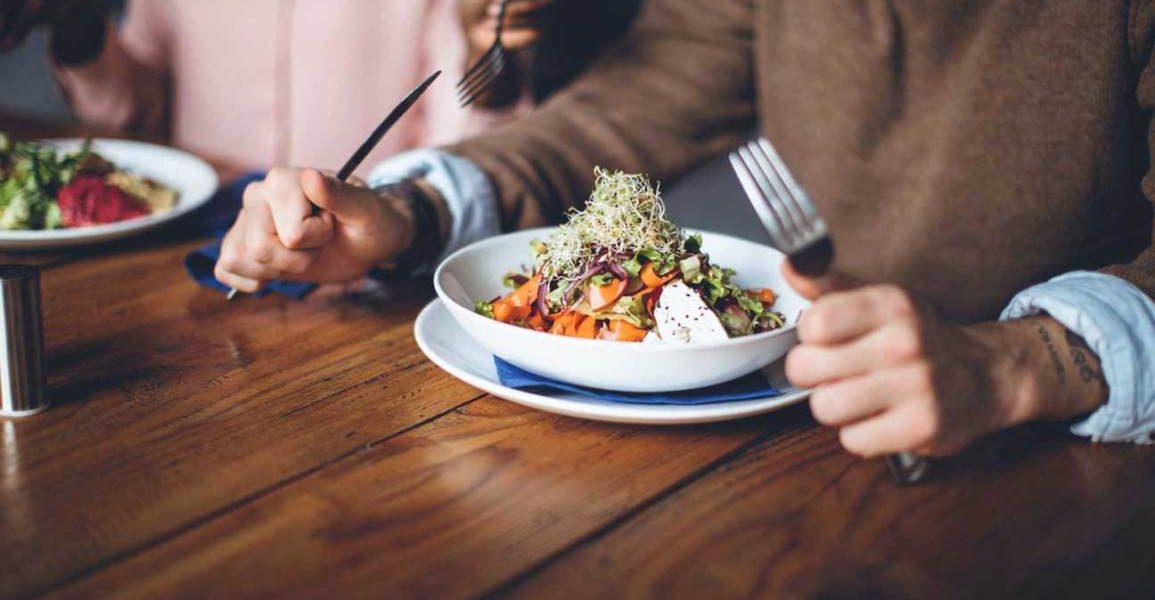5 steps to a lower GI diet
The glycemic index (GI) is a ranking of foods based on how fast those carbohydrates hit the bloodstream.
What is the GI?
GI stands for Glycemic Index, where ‘glycemic’ is simply the scientific word for glucose (sugar) in the blood. All of the carbohydrates we eat, including starch and sugars, ultimately end up as glucose through digestion and metabolism. The glycemic index, therefore, is a ranking of foods based on how fast those carbohydrates hit the bloodstream.
High GI foods lead to a large and rapid rise in blood glucose, whereas the same amount of carbohydrate from a low GI food gives a far smaller and steadier rise in blood glucose.
The interesting thing is that the GI is not related to whether the food is starchy or sugary – in fact many foods containing simple sugars have a far lower GI than many starchy foods. For example, the carbohydrate in an apple is almost entirely made up of simple sugars, but will have far less impact on your blood glucose than the same amount of carbohydrate eaten as white bread. Because of this, the GI has turned conventional thinking on its head and the advice to eat more complex carbohydrates is not warranted; instead, the recommendation becomes eating foods that are absorbed more slowly, aka low GI carbohydrates.
If you want some more information about why a low sugar diet is beneficial to your health check out That Sugar Guide here.
Here are five steps to creating a lower GI diet.
1. Be smart about breakfast
Breakfast is crucial to feel and perform your best, both mentally and physically. Studies show that choosing a low GI breakfast keeps you fuller for longer, which means that you eat less for the rest of the day. We also tend to show the biggest glucose and insulin responses at the first meal of the day, making this arguably the most important meal for you to opt for low GI. Some good options include:
- Muesli or low GI cereal with low fat milk, yogurt and sliced fruit
- Porridge made with traditional oats with low fat milk – try our overnight oats recipe here
- Fruit salad with natural yogurt
- Smoothie made with low fat milk and yogurt
- Poached eggs on low GI toast with spinach, tomato and mushrooms
- Toasted low GI bread topped with avocado and tomato, or a nut based spread.
2. Eat more legumes
Lentils, dried beans and peas are among nature’s super foods. Not only are they among the lowest GI foods tested, but they provide protein, essential vitamins and minerals, disease-fighting antioxidants and fabulous amounts of fibre. Most people tend to think of these foods as replacements for meat in a vegetarian diet, but in fact they are excellent in place of high GI carbs such as potatoes or rice. Don’t worry about soaking and cooking beans yourself (although if you can be bothered they are delicious this way), the canned varieties are fine and should be a pantry staple. Here are some ideas as to how to use them:
- Make a lentil dahl and serve with your favourite curry
- Toss a can of mixed beans into a salad and dress with a little olive oil and vinegar for a quick lunch
- Mash a can of white beans with some garlic and light cream cheese for a delicious dip
- Throw a can of beans into a mince-based dish such as bolognaise or chilli con carne
- Mash a can of chickpeas with a little olive oil, garlic and season and serve in place of mashed potatoes
- Use red lentils to thicken casseroles, stews and curries instead of flour
3. Choose wholegrain whenever possible
A whole cereal grain includes the outer husk which provides fibre, but also many essential vitamins and minerals. Increasing levels of refinement during food processing means not only a loss of these nutrients, but a step wise increase in the GI of the grain. This is why bread made from white flour has a far higher GI than those made with wholegrain. The same is true of breakfast cereals, crispbreads and biscuits.
4. Develop an international flavour for food
Many of the traditional foods of different countries from around the world have a low GI. Tortillas and bean-based meals from Mexico, bulgur wheat in Middle-Eastern dishes, lentil dahls from India, Japanese sushi, quinoa (pronounced keen-wa) a tiny South American grain or yam used extensively in African cooking. Try using some of these ingredients at home, or take advantage of eating out as opportunities for varying your low GI choices.
5. Prepare more of your own food
Today we all seem to lead such busy lives that food preparation and cooking is no longer a priority. However if we are to be successful in eating more fresh, nutrient-rich food and be in control of your own nutritional intake, preparing more of your own food is essential. It needn’t be every night, but make it your goal to get into the kitchen more often.
By Joanna McMillan-Price | https://drjoanna.com.au
Joanna is a nutrition scientist and fitness leader with more than 12 years experience in the industry, both in her homeland Scotland and her adopted country Australia. She is currently writing her PhD thesis having completed four years of research with the Glycemic Index Research Group at the University of Sydney. She is the author of Reality Food, co-author of the Low GI Diet and The Low GI Diet Cookbook and is a regular media spokesperson. Other titles by Joanna McMillan-Price can be found here

